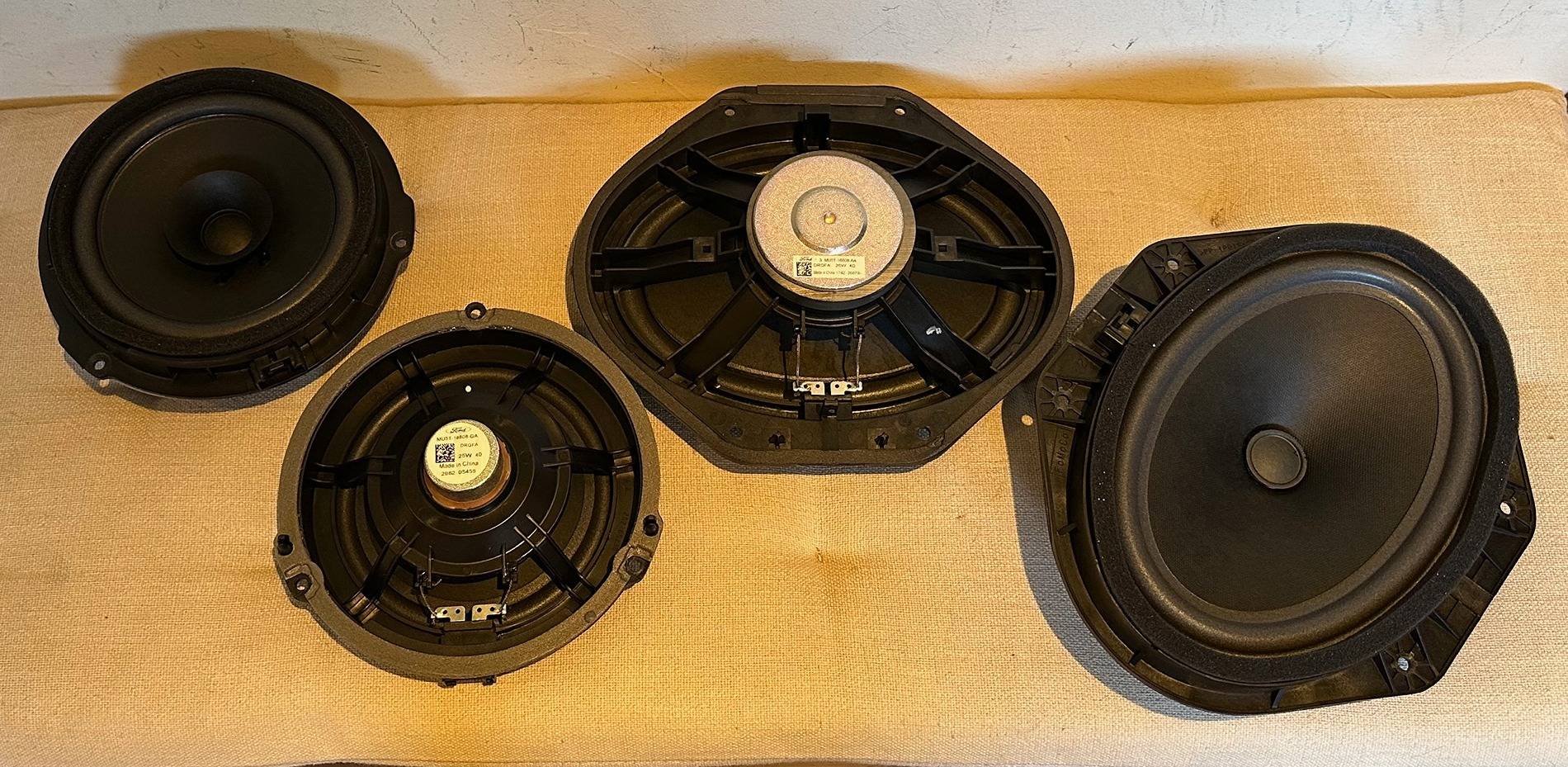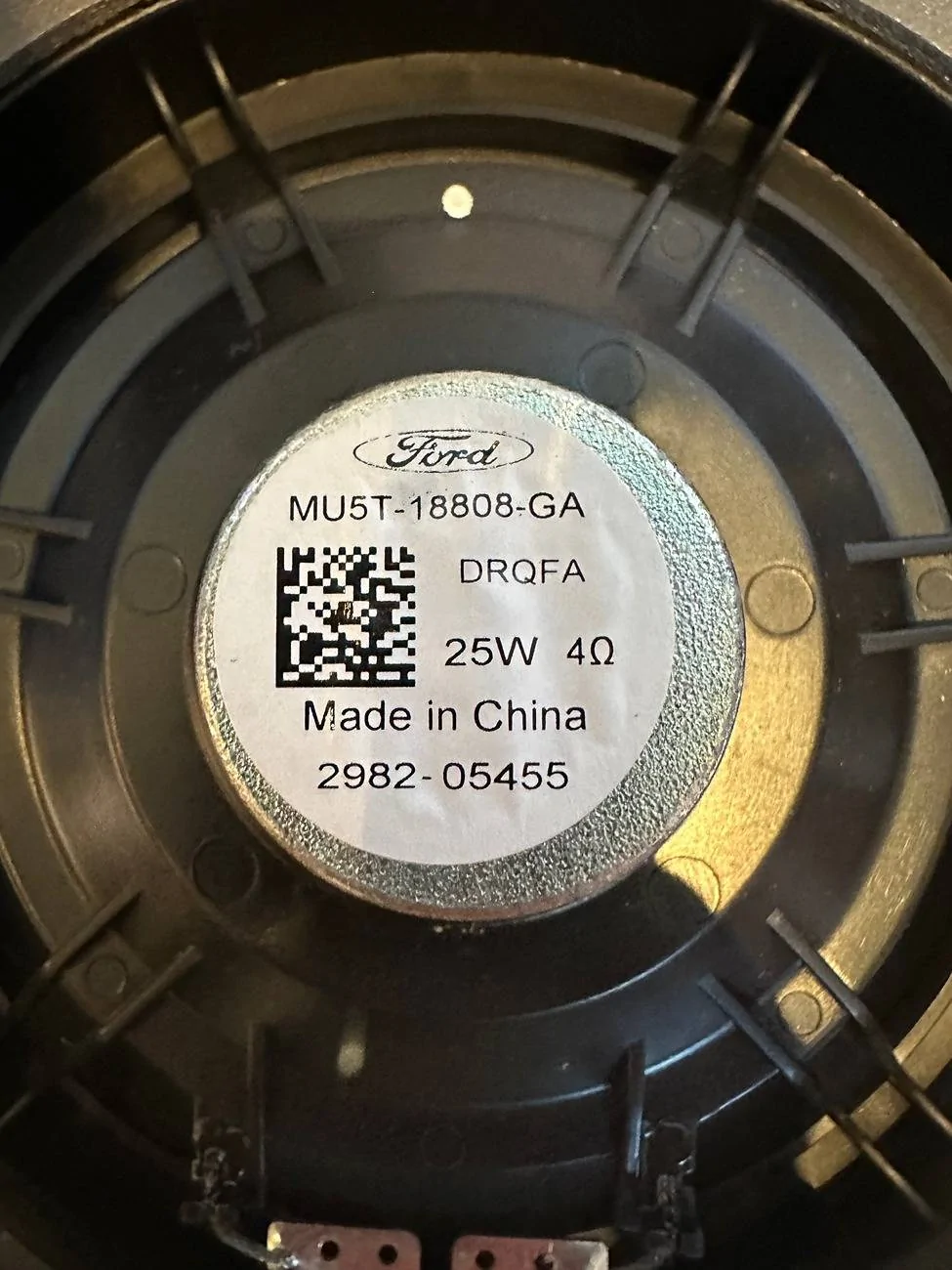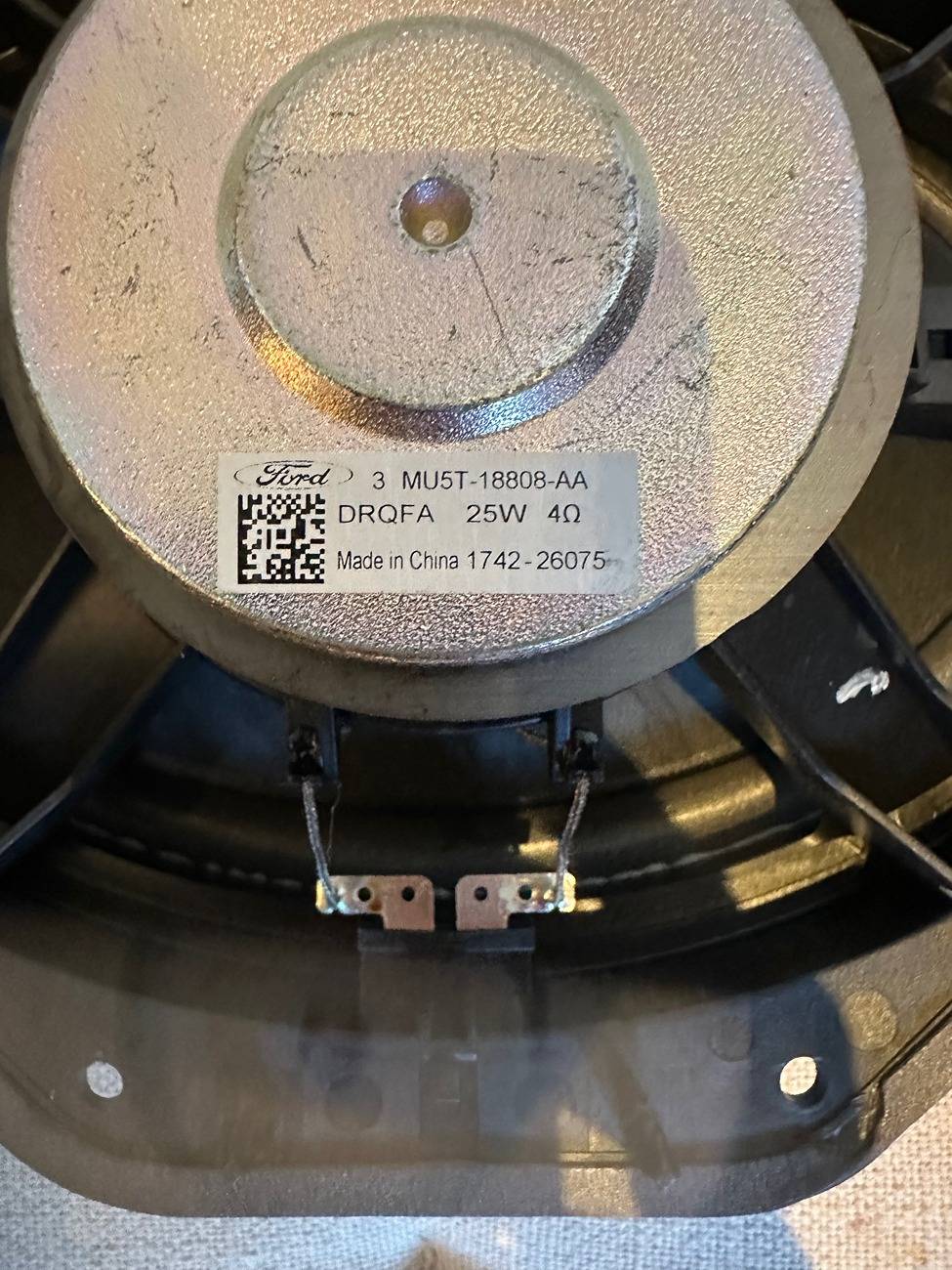scoobybri
Well-known member
- First Name
- Brian
- Joined
- Apr 19, 2024
- Threads
- 10
- Messages
- 103
- Reaction score
- 289
- Location
- Virginia, USA
- Vehicles
- 2023 Lightning XLT w/Max Tow and TT Packs
- Thread starter
- #1
While the base 6 speaker sound system is ok (light years better than stock systems of old), coming from a Tesla Model Y with the premium sound system, I'm used to something a bit better than what came in my 2023 XLT (12" screen.) So I decided to upgrade the system to try to get closer to what I had in the Tesla.
The first thing that had to happen was a subwoofer. The midbass is adequate but there's nothing like the kick of a sub. I looked at adding the factory sub but the cost-to-performance was not great and having to hack using Forscan to make it work made me look elsewhere. I decided that I wanted to put a sub under the back seat, but the height of 5.5" limited my options for subs. The criteria was not super deep bass that the entire neighborhood feels as I drive by, but a more natural flat bass response. This pointed me to using a sealed box rather than a ported one. I could not find a prebuilt box and sub combo that would have the frequency response I wanted so I decided to do a custom built box. For the subwoofer, I went with a Rockford Fosgate 10" model P3SD2-10 Punch P3S shallow subwoofer. Power rating 300 watts RMS/600 watts peak. More than enough to shake a rear view mirror. It can be wired for 2 or 4 ohms. I built the cabinet with 3/4" MDF at an internal volume of .9 sq. ft. which is at the upper end of the sub's ideal sealed volume. With that volume and short height, it makes the shallow cab fairly wide. It has an F3 of about 46 hz. Deep enough for me.
Here's a pic of the cab...

Cabinet with the seat down...

For the amp, I went with a very well reviewed Alpine S-A60M Monoblock amp. 350 watts RMS wired at 4 ohms which is what I'm using (more power at 2 ohms.) Yes, the sub handles less wattage than the amp puts out, but since I never plan on pushing the amp or sub hard, it should not be a problem. Amp was mounted behind the driver side rear seat.

To convert the high level signal from the front speaker leads to the amp, I went with a Kicker 46KISLOC2 K-Series Stereo Line-Output Converter. This LOC has a remote power lead to the amp to turn it on and off with the ignition. Rather than splice the wires in the OEM wire harness, I used a PAC L.O.C. Pro Advanced Audio Integration T-Harness. (Model LPHFD31) This harness connects between the radio and the Ford OEM wiring harness and provides the leads needed to feed the high level signal going to the speakers to the LOC without cutting any wires.

For the amp power, I purchased an all-in-one amp wiring kit that provided the 2 gauge positive and negative power wires to the amp along with a large fuse block, the ignition signal power wire from the LOC to the amp, and some nice shielded RCA wires to send the low level output from the LOC to the amp. Power was run through the firewall through the grommeted wiring hole on the driver side. Everything else was run under the door sills on the driver side. I didn't take any pics but there are tons of examples of how to run the wires if you do a search.
This setup sounds great. It definitely thumps hard with hip hop but also growls with rock and metal. But, of course, I couldn't leave well enough alone. A month later, after seeing the "quality" of Ford's OEM speakers on several posts, I decided that I wanted to get some door speakers that gave me more clarity than the stocks. I had no intention to add another amp to the OEM stereo since it was already loud enough to cause hearing damage, so I was looking for speakers whose purpose was to be an upgrade for OEM speakers while staying with a stock radio. I had considered some Powerbass speakers that were more or less plug and play with Ford's speaker wiring harnesses, but I decided to chat with a Crutchfield sales rep to see what better options there are besides the Powerbass. (The Powerbass low end range was limited and their sensitivity was not very good.) The recommendation was JL C1-690 component speakers (6x9s with separate tweeters) for the front and JL Audio C1-650x 6.5" coaxial speakers for the rear. What made me call them is that their website says that the speakers are not compatible with our Lightnings. It took a bit to get clarification but they do in fact work perfectly with our Lightnings, being the correct size and ohms (4). They threw in the Metra wiring harness adapters and speaker mounting brackets for free. I also bought sound deadening material for all doors (but not from Crutchfield.)
Comparison of the stock speakers vs. JLs


So I installed the 6x9s and 6.5" rears without any difficulty. Very straight forward.

The problem was what to do with the tweeters. The JL tweeters came with their own inline crossover just like the OEM tweeters. But they did not fit in the tweeter brackets in the A pillar cover. So I fabricated a jacked up way of securing in the OEM tweeter spots to see if I liked their sound in the A pillars. Turns out I did NOT! The brightness of the JL tweeters coupled with the reflection angle of the windshield made them very "beamy." All of the treble seemed to be coming from one side of the cabin when sitting in the drivers seat. If I moved my head to the center, it would go to the center. So Option 1 was a bust. So I looked at the instructions again and JL was suggesting that the tweeters be placed as close to the woofers in the door as possible. I did not want to cut the door panels so I thought maybe I could mount the tweeters on the sail covers on each door. That would have the tweeters close to the same height as the A pillar location but aiming at 90 degrees to my seating position rather than aiming at the windshield. Plus, if I did not like them there, replacing the sail covers only costs about $25 a piece to replace vs $350 for a door panel. So I mounted the tweeters on the sail panels.

Result? WAY TOO bright! Even with the treble set to low, it was just too piercing for me. So a solution was to put in a resistor L-Pad circuit to drop the decibels while keeping the resistance that the stereo sees as 4 ohms and not affecting the frequency range. I bought a bunch of different audio grade resistors to allow me to try different db levels. I settled on a resistor combo that gave me a -6 db level on the tweeters.
Temp L-pad circuit...

Definitely better...BUT...when the treble setting was set correctly for the front speakers, the rears were blasting the treble making the sound uneven between the front and rear speakers. Ugh!
So I was not sure what to do at this point. I remembered that JL highly recommends mounting the tweeters in the same general location as the woofers for the best sound field. That meant cutting my door panels. I could have used the tweeter mounts like on the sails that only require a small hole be drilled. But a small hole is still a hole so I decided to go for it and use a 1.75" hole saw to cut a hole in the door panels so I could flush mount the tweeters. I'm so glad I did! The tweeters look great flush mounted...like from the factory. I used a milder L-pad circuit for the tweeters that has a -3db volume drop. Guess what? This setup is exactly perfect. JL was not kidding that putting the tweeters in the doors is the best location for an even sound field.
Door mounted tweeter...

Final L-pad circuit with quick disconnects...

I know that this sounds crazy, but I think the JLs in the doors with the sub in the rear sounds as good as my Model Y's sound system. The front JL door speakers have significantly cleaner mids, mid bass, and treble while having about the same amount of lower bass as stock. The stock rear speakers are garbage and the replacement 6.5" JLs are significantly better across the board at all frequencies. Couple that with a tight and even hard hitting sub and I'm completely satisfied with my sound system now.
One thing I just added is an Alpine RUX-KNOB.2 Remote Control Bass Knob so I can tweak the subwoofer level from the cabin, rather than having to pull down the rear seat back to get to the amp. Easy peasy running the wire from the amp to the center console and then mounting the knob inside. Works like a charm!

I hope this helps anyone else who might be considering upgrading the stock 6-speaker system.
The first thing that had to happen was a subwoofer. The midbass is adequate but there's nothing like the kick of a sub. I looked at adding the factory sub but the cost-to-performance was not great and having to hack using Forscan to make it work made me look elsewhere. I decided that I wanted to put a sub under the back seat, but the height of 5.5" limited my options for subs. The criteria was not super deep bass that the entire neighborhood feels as I drive by, but a more natural flat bass response. This pointed me to using a sealed box rather than a ported one. I could not find a prebuilt box and sub combo that would have the frequency response I wanted so I decided to do a custom built box. For the subwoofer, I went with a Rockford Fosgate 10" model P3SD2-10 Punch P3S shallow subwoofer. Power rating 300 watts RMS/600 watts peak. More than enough to shake a rear view mirror. It can be wired for 2 or 4 ohms. I built the cabinet with 3/4" MDF at an internal volume of .9 sq. ft. which is at the upper end of the sub's ideal sealed volume. With that volume and short height, it makes the shallow cab fairly wide. It has an F3 of about 46 hz. Deep enough for me.
Here's a pic of the cab...
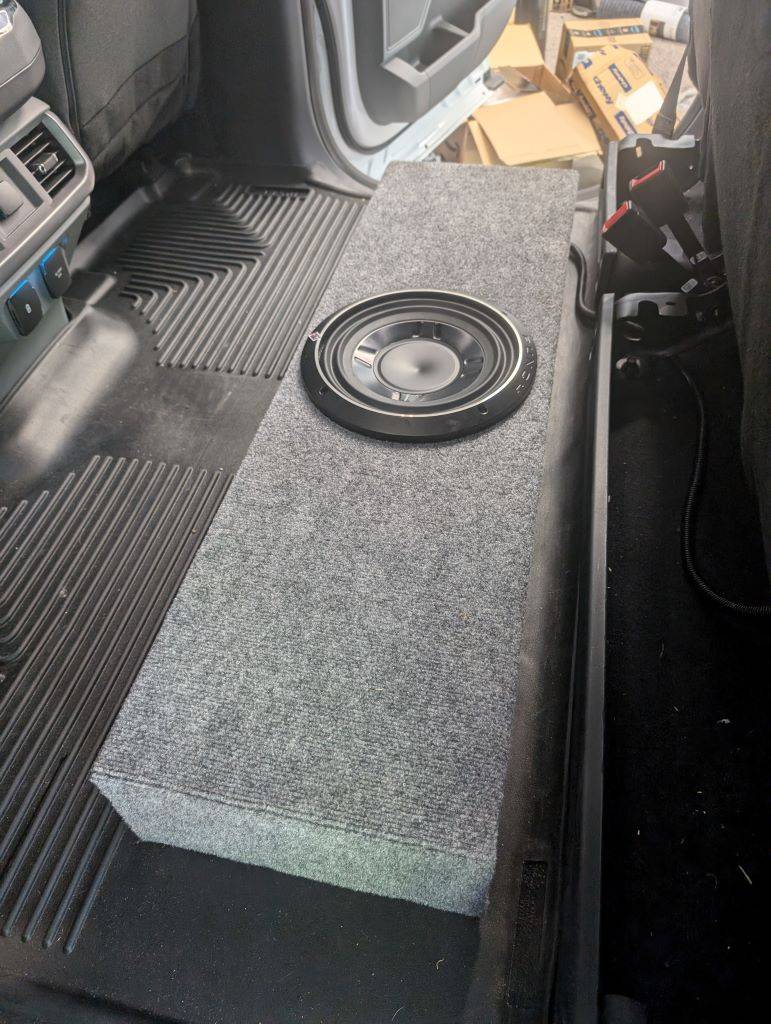
Cabinet with the seat down...
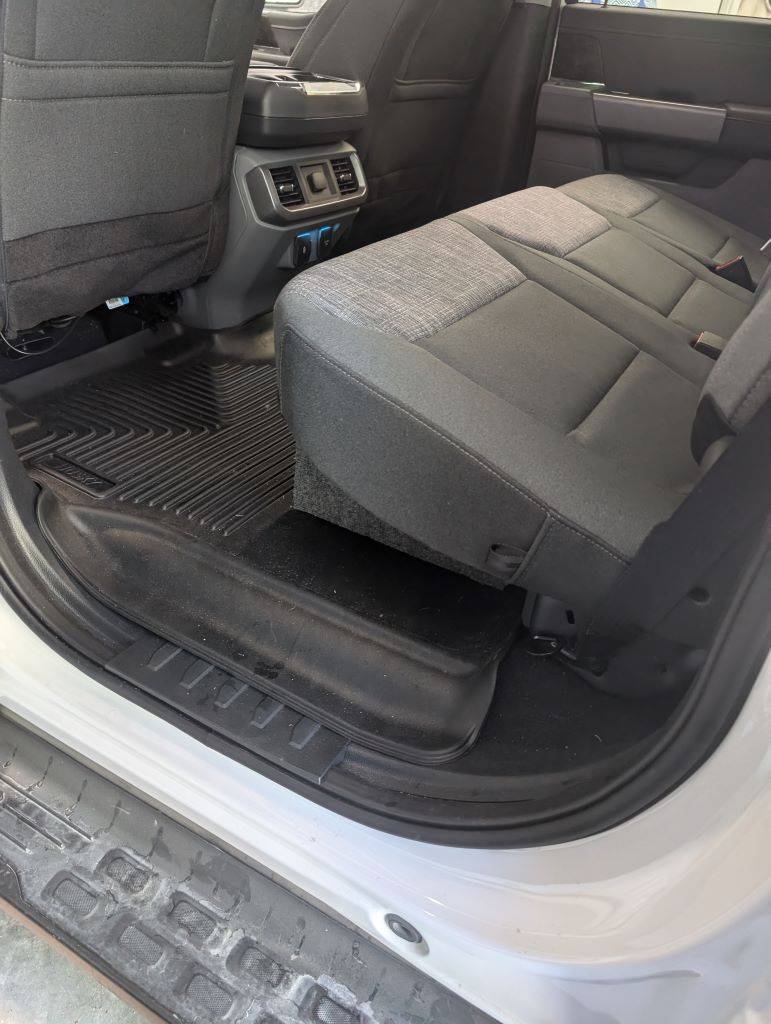
For the amp, I went with a very well reviewed Alpine S-A60M Monoblock amp. 350 watts RMS wired at 4 ohms which is what I'm using (more power at 2 ohms.) Yes, the sub handles less wattage than the amp puts out, but since I never plan on pushing the amp or sub hard, it should not be a problem. Amp was mounted behind the driver side rear seat.
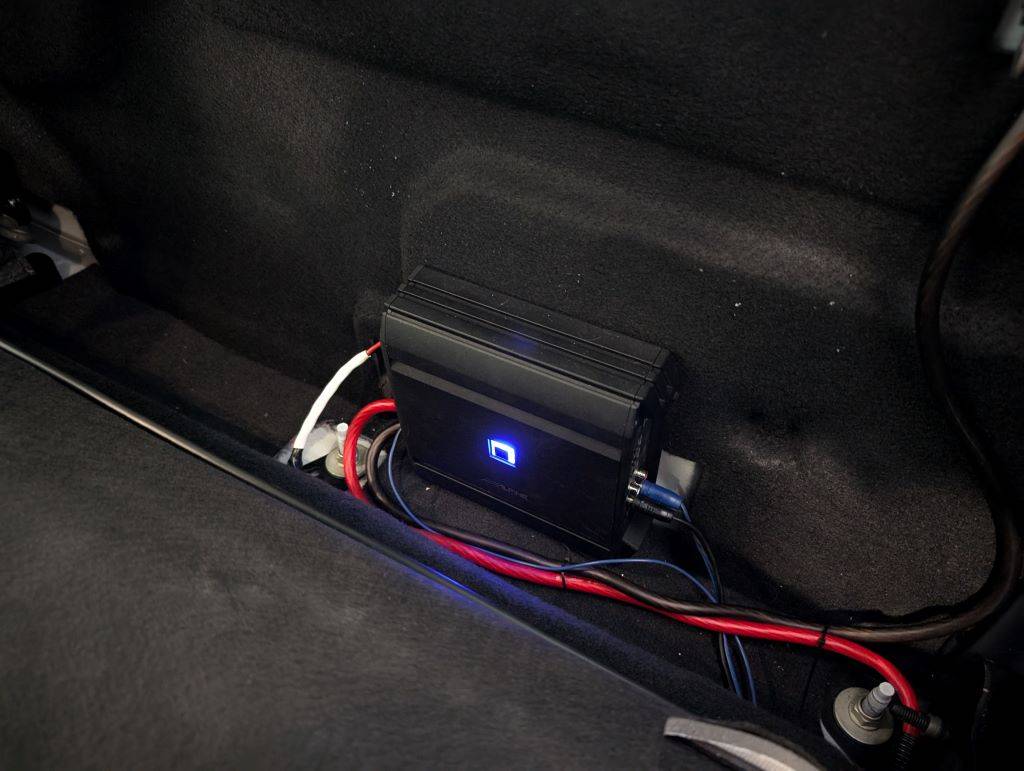
To convert the high level signal from the front speaker leads to the amp, I went with a Kicker 46KISLOC2 K-Series Stereo Line-Output Converter. This LOC has a remote power lead to the amp to turn it on and off with the ignition. Rather than splice the wires in the OEM wire harness, I used a PAC L.O.C. Pro Advanced Audio Integration T-Harness. (Model LPHFD31) This harness connects between the radio and the Ford OEM wiring harness and provides the leads needed to feed the high level signal going to the speakers to the LOC without cutting any wires.
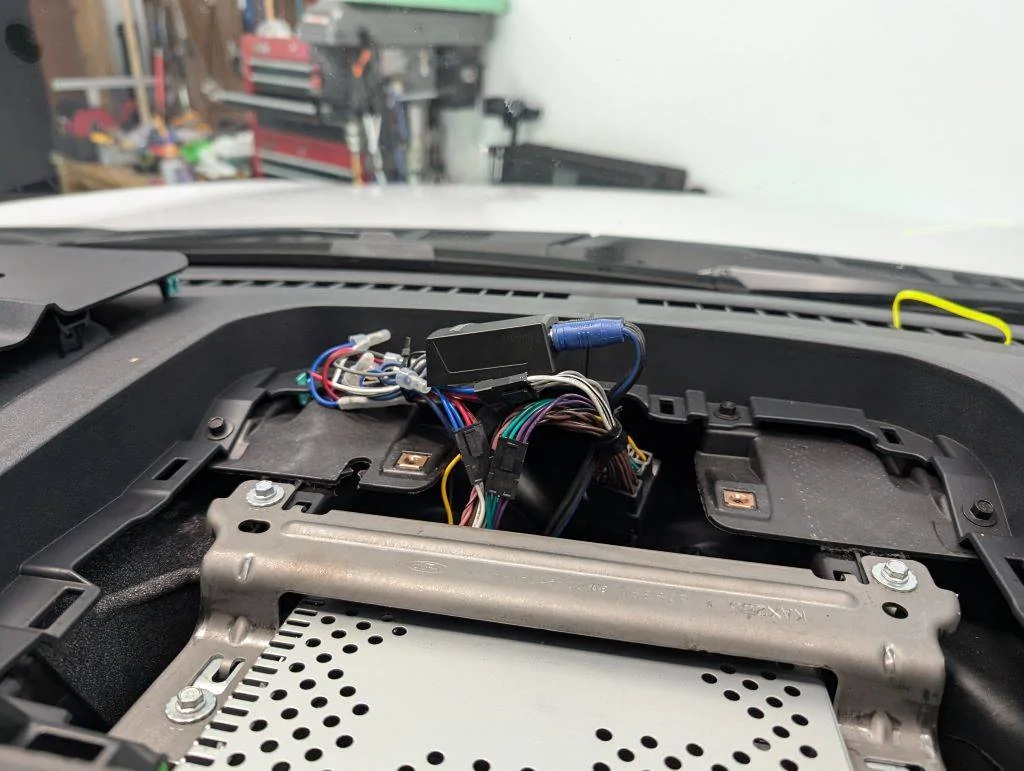
For the amp power, I purchased an all-in-one amp wiring kit that provided the 2 gauge positive and negative power wires to the amp along with a large fuse block, the ignition signal power wire from the LOC to the amp, and some nice shielded RCA wires to send the low level output from the LOC to the amp. Power was run through the firewall through the grommeted wiring hole on the driver side. Everything else was run under the door sills on the driver side. I didn't take any pics but there are tons of examples of how to run the wires if you do a search.
This setup sounds great. It definitely thumps hard with hip hop but also growls with rock and metal. But, of course, I couldn't leave well enough alone. A month later, after seeing the "quality" of Ford's OEM speakers on several posts, I decided that I wanted to get some door speakers that gave me more clarity than the stocks. I had no intention to add another amp to the OEM stereo since it was already loud enough to cause hearing damage, so I was looking for speakers whose purpose was to be an upgrade for OEM speakers while staying with a stock radio. I had considered some Powerbass speakers that were more or less plug and play with Ford's speaker wiring harnesses, but I decided to chat with a Crutchfield sales rep to see what better options there are besides the Powerbass. (The Powerbass low end range was limited and their sensitivity was not very good.) The recommendation was JL C1-690 component speakers (6x9s with separate tweeters) for the front and JL Audio C1-650x 6.5" coaxial speakers for the rear. What made me call them is that their website says that the speakers are not compatible with our Lightnings. It took a bit to get clarification but they do in fact work perfectly with our Lightnings, being the correct size and ohms (4). They threw in the Metra wiring harness adapters and speaker mounting brackets for free. I also bought sound deadening material for all doors (but not from Crutchfield.)
Comparison of the stock speakers vs. JLs
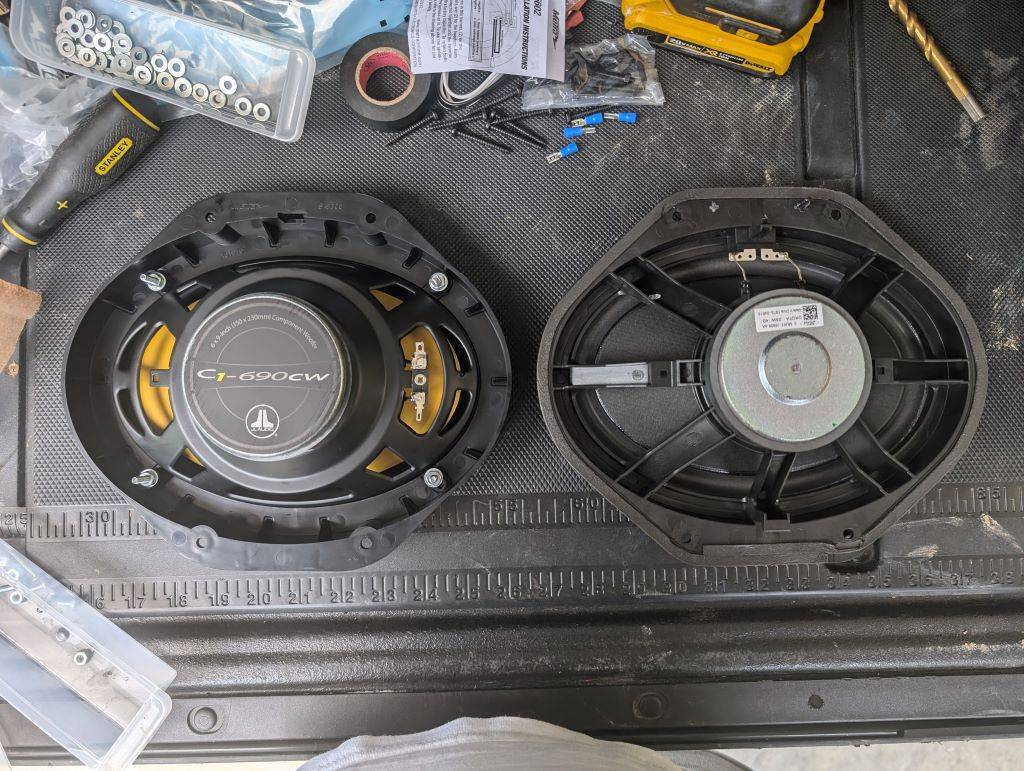
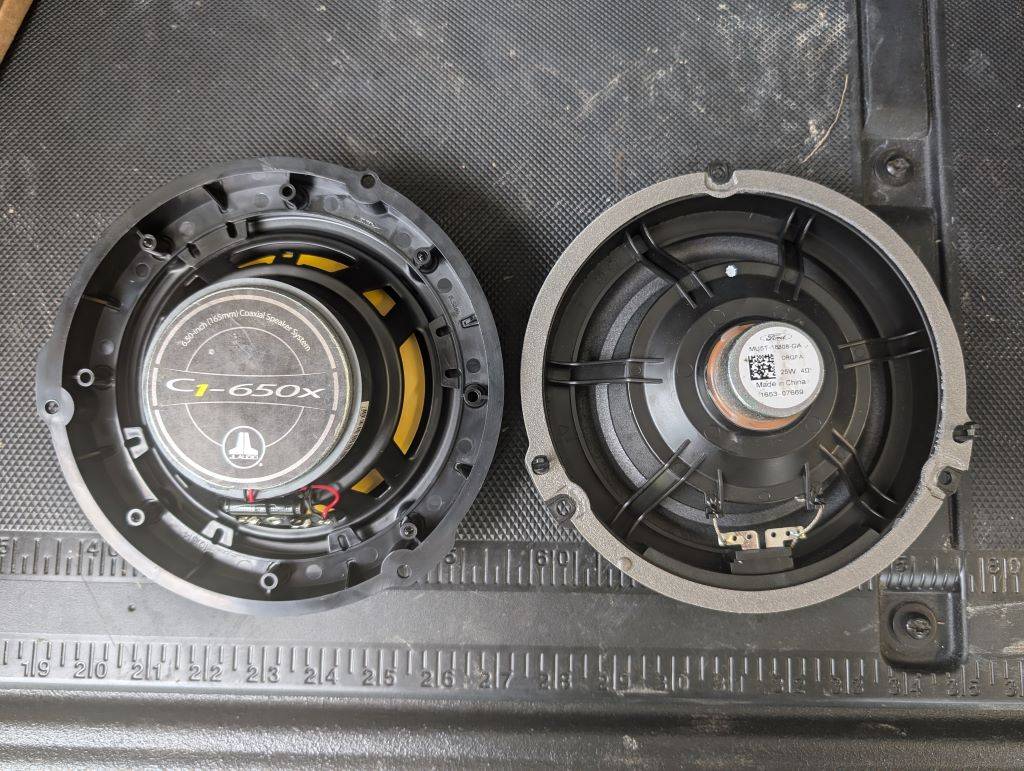
So I installed the 6x9s and 6.5" rears without any difficulty. Very straight forward.
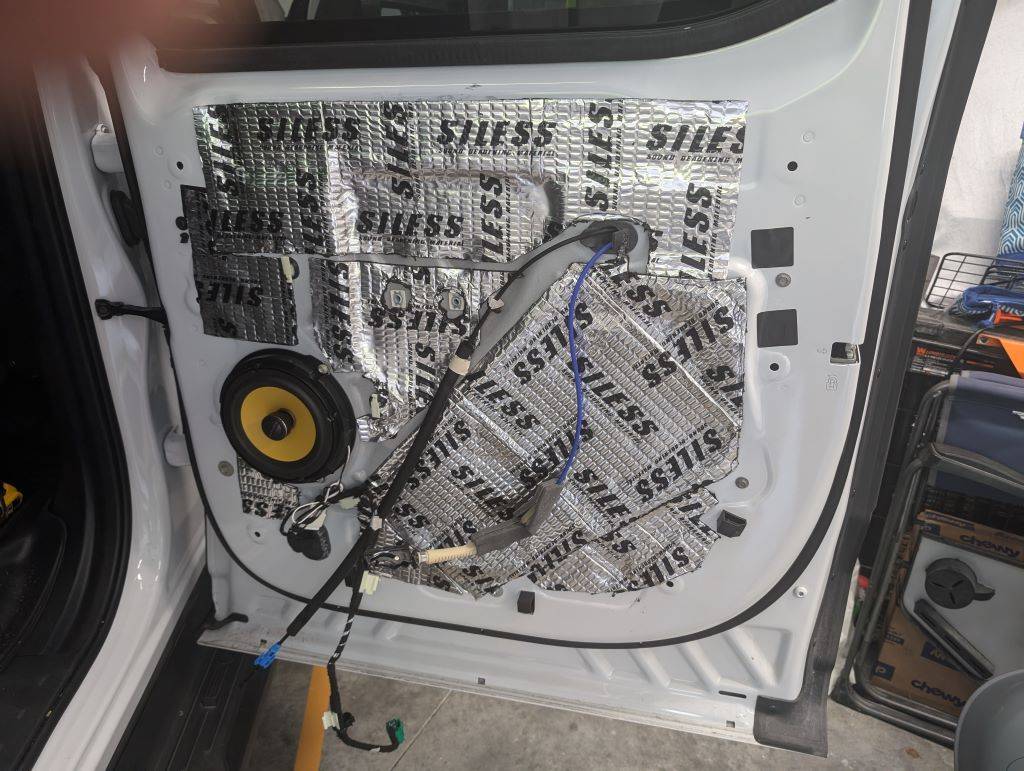
The problem was what to do with the tweeters. The JL tweeters came with their own inline crossover just like the OEM tweeters. But they did not fit in the tweeter brackets in the A pillar cover. So I fabricated a jacked up way of securing in the OEM tweeter spots to see if I liked their sound in the A pillars. Turns out I did NOT! The brightness of the JL tweeters coupled with the reflection angle of the windshield made them very "beamy." All of the treble seemed to be coming from one side of the cabin when sitting in the drivers seat. If I moved my head to the center, it would go to the center. So Option 1 was a bust. So I looked at the instructions again and JL was suggesting that the tweeters be placed as close to the woofers in the door as possible. I did not want to cut the door panels so I thought maybe I could mount the tweeters on the sail covers on each door. That would have the tweeters close to the same height as the A pillar location but aiming at 90 degrees to my seating position rather than aiming at the windshield. Plus, if I did not like them there, replacing the sail covers only costs about $25 a piece to replace vs $350 for a door panel. So I mounted the tweeters on the sail panels.
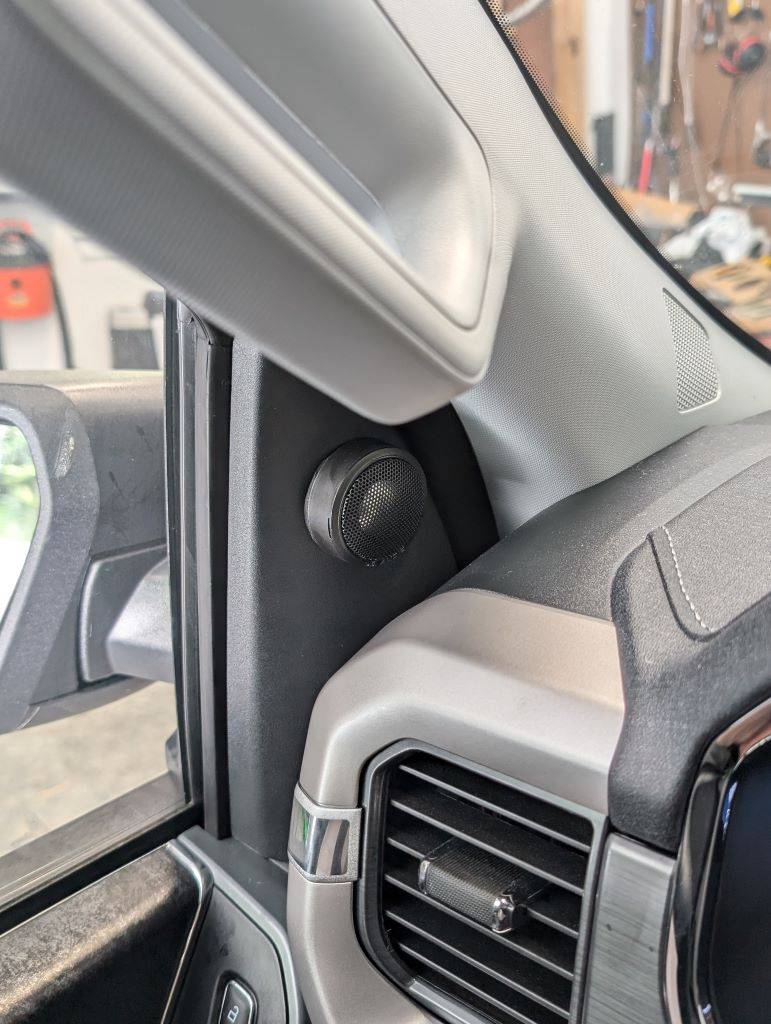
Result? WAY TOO bright! Even with the treble set to low, it was just too piercing for me. So a solution was to put in a resistor L-Pad circuit to drop the decibels while keeping the resistance that the stereo sees as 4 ohms and not affecting the frequency range. I bought a bunch of different audio grade resistors to allow me to try different db levels. I settled on a resistor combo that gave me a -6 db level on the tweeters.
Temp L-pad circuit...
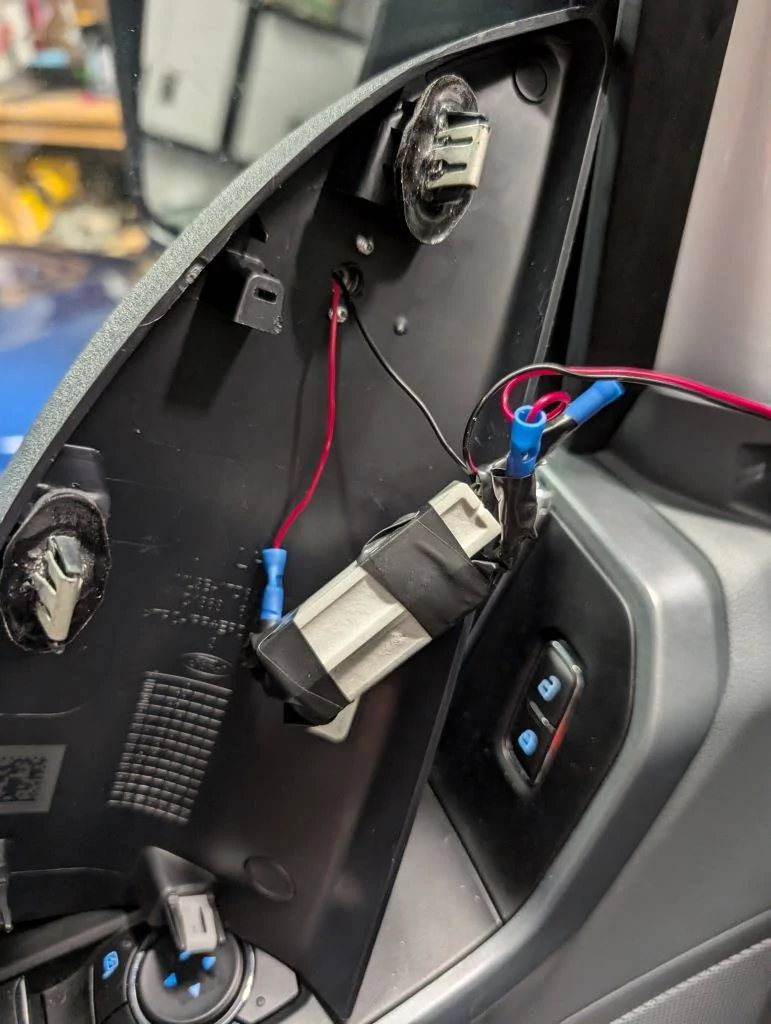
Definitely better...BUT...when the treble setting was set correctly for the front speakers, the rears were blasting the treble making the sound uneven between the front and rear speakers. Ugh!
So I was not sure what to do at this point. I remembered that JL highly recommends mounting the tweeters in the same general location as the woofers for the best sound field. That meant cutting my door panels. I could have used the tweeter mounts like on the sails that only require a small hole be drilled. But a small hole is still a hole so I decided to go for it and use a 1.75" hole saw to cut a hole in the door panels so I could flush mount the tweeters. I'm so glad I did! The tweeters look great flush mounted...like from the factory. I used a milder L-pad circuit for the tweeters that has a -3db volume drop. Guess what? This setup is exactly perfect. JL was not kidding that putting the tweeters in the doors is the best location for an even sound field.
Door mounted tweeter...
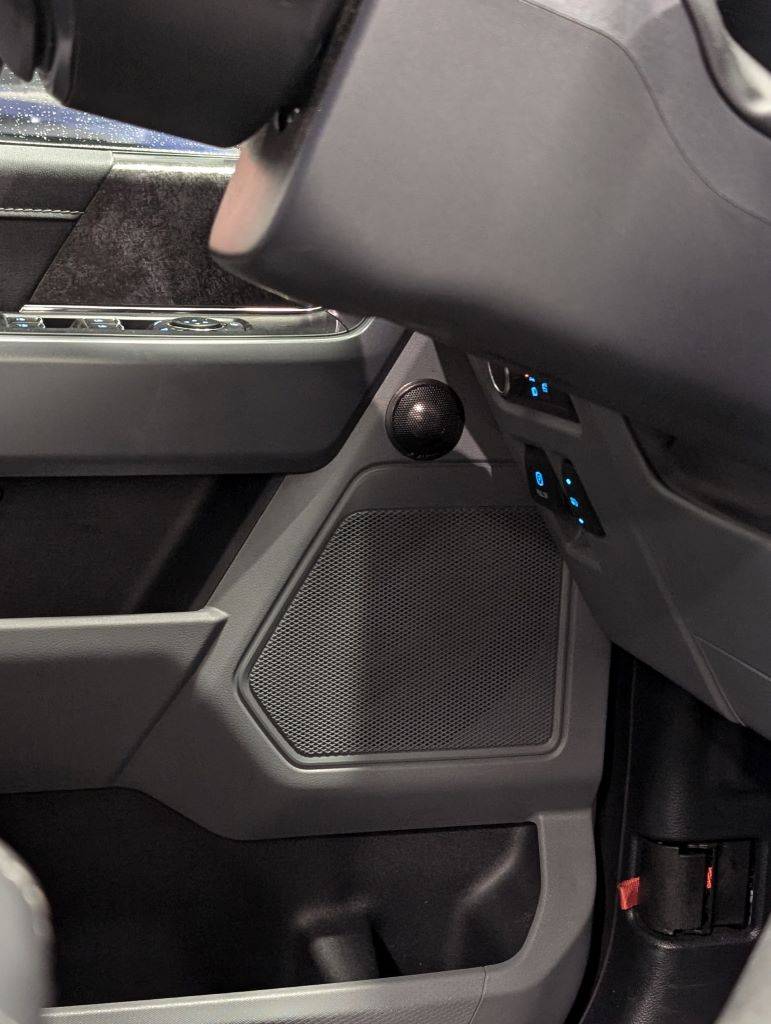
Final L-pad circuit with quick disconnects...
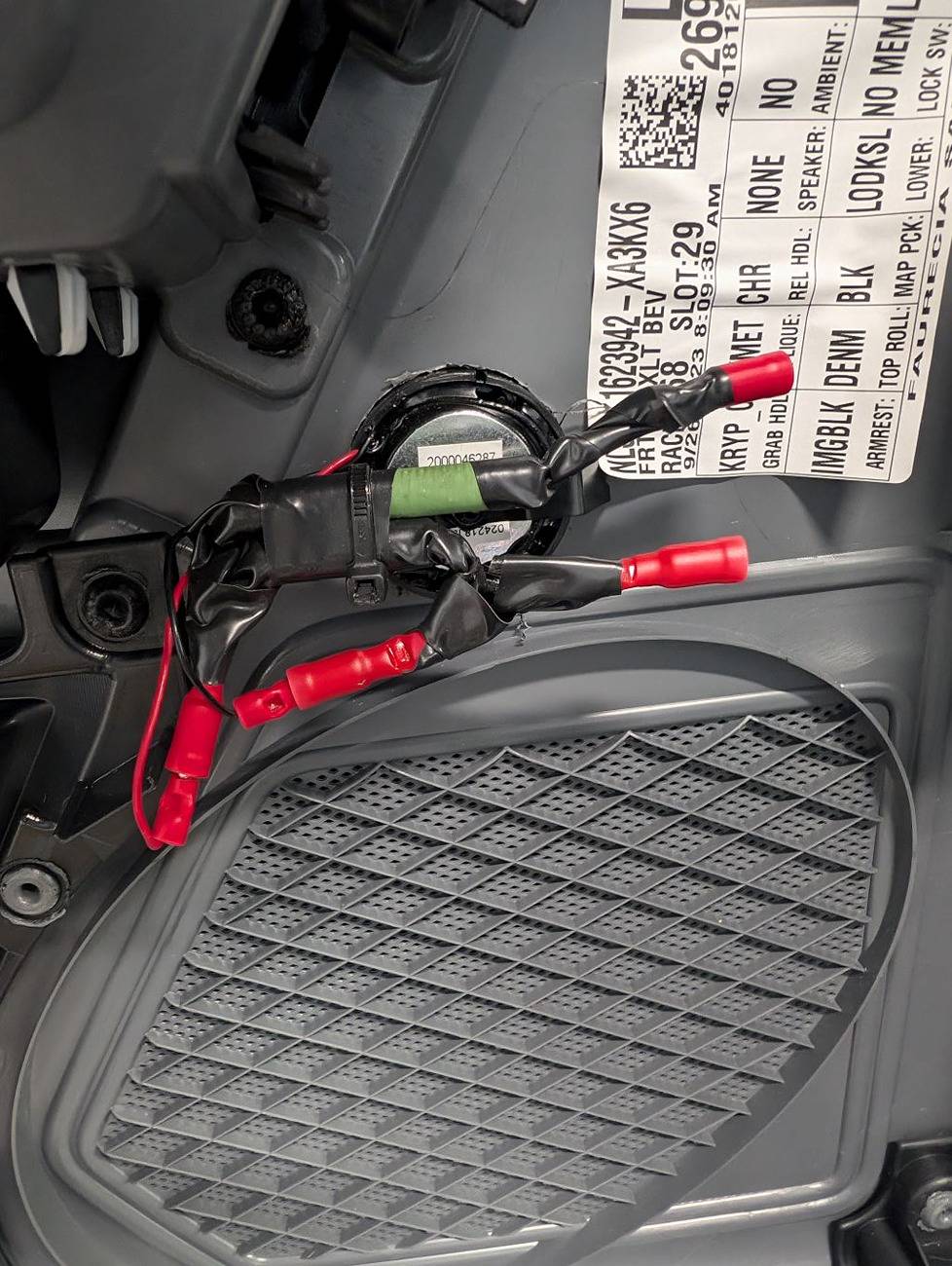
I know that this sounds crazy, but I think the JLs in the doors with the sub in the rear sounds as good as my Model Y's sound system. The front JL door speakers have significantly cleaner mids, mid bass, and treble while having about the same amount of lower bass as stock. The stock rear speakers are garbage and the replacement 6.5" JLs are significantly better across the board at all frequencies. Couple that with a tight and even hard hitting sub and I'm completely satisfied with my sound system now.
One thing I just added is an Alpine RUX-KNOB.2 Remote Control Bass Knob so I can tweak the subwoofer level from the cabin, rather than having to pull down the rear seat back to get to the amp. Easy peasy running the wire from the amp to the center console and then mounting the knob inside. Works like a charm!
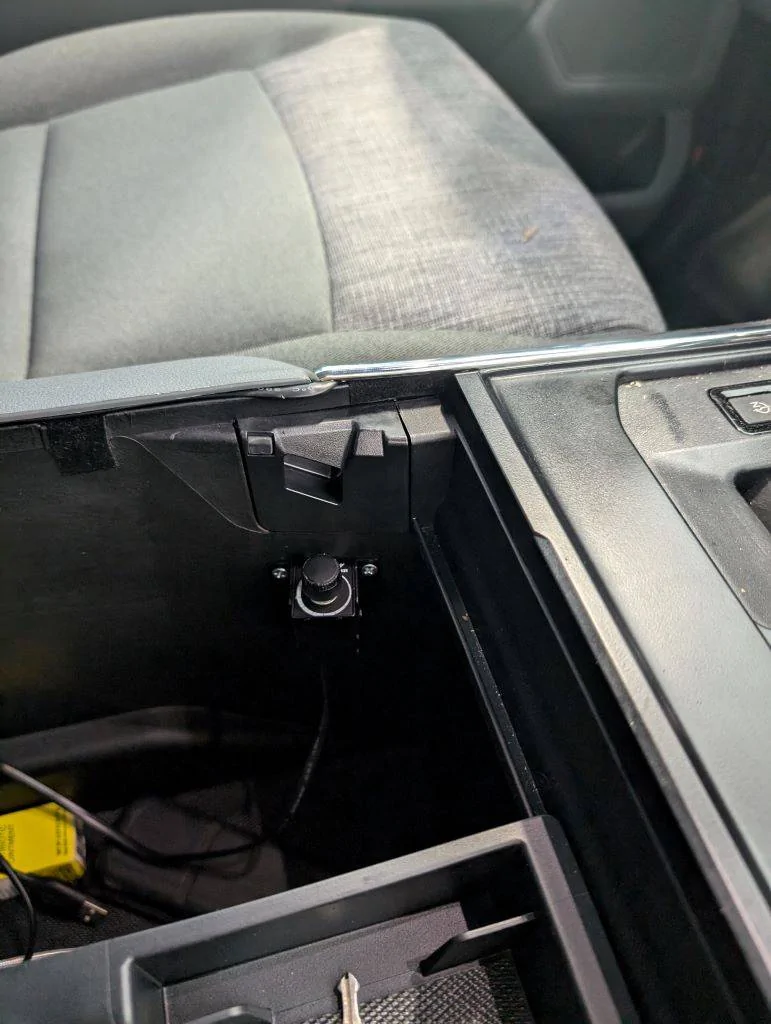
I hope this helps anyone else who might be considering upgrading the stock 6-speaker system.
Sponsored


